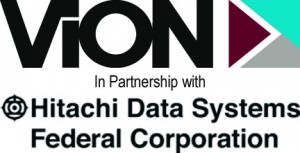The following blog post is an excerpt from a recent GovLoop resource: Your Guide to Using Everything-as-a-Service. In the guide, we explore how agencies can maximize the benefits of cloud technology by creating a holistic everything-as-a-service (XaaS) strategy.
An interview with Rob Davies, Vice President of On-Demand at ViON
Government agencies are experts in planning. Budgets, hiring, and a multitude of other tasks are scheduled and meticulously planned well in advance, in order to secure the necessary resources to achieve mission goals. But fewer organizations have extensive experience in planning for cloud transitions.
Rob Davies from ViON, a veteran cloud provider to government organizations, asserted that cloud deployment requires just as much planning as your annual budget proposal.
“Cloud is just like any other technology project,” Davies said. “You have to do due diligence with respect to planning, testing, and investigating.”
This sort of scrutiny is crucial. “If you haven’t planned carefully and executed the testing in your cloud service provider’s environment, the solution might not work the way you want it to,” said Davies. “In many cases with the federal government, it’s trying to make something more readily accessible to the citizenry. If it doesn’t work, that’s going to cause a lot of rework and unplanned costs.”
Before executing a cloud deployment, agencies must assess their current state and future goals. “What components or parts of their workload are they looking to migrate to cloud?” asked Davies. “Have they completed an analysis of their entire workload?” Without an adequate view of these considerations, organizations may deploy a solution that does not align to their strategic goals, and consequently produce the desired results.
Given current infrastructure and needs, an organization should create a budget to match its goals. This budget should not only include transition costs, but also the potential costs of moving from the cloud solution.
“Another consideration is, once a contract’s up, what’s my transition out approach? What are the associated costs or budgets that I might need to establish?” said Davies. “You always have to have a transition plan for that contract, and cloud isn’t any different. Just, hopefully, the technology makes it a lot easier to go through that process.”
Once you’ve asked the right questions, your agency will need to focus on finding the right answers. “The key is to find a partner that has the knowledge and experience in providing cloud solutions, who can identify potential pitfalls in the planning stages, so they don’t become realities,” said Davies. “When you look at cloud solutions, you have to make sure they run on the platform, they are in the right language, they require minimal work, they have the right security profile – there is a lot to consider.”
In many cases, cloud transitions will require melding cloud offerings with legacy systems, either due to contract constraints or because those systems are necessary to the overarching IT infrastructure. “Getting everything to the cloud doesn’t mean getting everything to a cloud service provider,” said Davies. “There’s a tremendous amount of government workload that runs on legacy systems which means the cloud solution needs to integrate seamlessly with the existing platform. It may also mean bringing the efficiencies of the cloud to the agency. That sounds straightforward, but there is a lot of work that goes into that.”
In addition to checking for integration capability, agencies must ensure that whichever cloud configuration is chosen will also meet the transparency and auditability standards necessary of government IT systems. “You have to make sure the provider is delivering a supported cloud in the federal space that is built around acquisition regulations, standards, and the deliverables that the government requires,” said Davies.
Finally, cloud solutions should be considered for their ability to adapt. In addition to matching a cloud solution to the demands of your agency today, consider its ability to scale with agency growth and integrate with the next wave of technology innovations. Once your cloud solution is deployed, it should be continuously adapted to meet both short and long-term planning goals. This may require working with your cloud provider to alter processes and configurations, as business needs change.
“If you’ve got a specific system or project you need help with, we’ll sit there and show you how do to it in real time,” Davies said. “When ViON started as a solutions provider for government, we provided the services to help architect, configure, stand-up and then be available for questions while it was running. We viewed it as part of our responsibility and business model to have that expertise available. That carries over into cloud today.”
Throughout the lifecycle of a cloud acquisition, careful preparation is required to avoid unplanned costs or service disruptions. An optimal cloud service provider not only delivers solutions, but also makes sure they are deployed with appropriate scrutiny.
“It’s a different technology platform and capability, but that doesn’t mean that you can skip your planning and your budgeting and your contingency planning,” said Davies. “Agencies must consider the full picture of what they’re going to put in the cloud, how they’re going to manage it when it’s in the cloud, and how they are going to operate as an organization once their application is in the cloud.”
To learn more about XaaS strategies to optimize cloud, check out the full report: Your Guide to Using Everything-as-a-Service.






Leave a Reply
You must be logged in to post a comment.